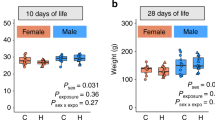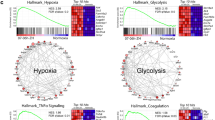Abstract
IN human premature infants, prolonged exposure to an oxygen concentration above 30–40 per cent in an incubator tends to produce retinal damage1 (retrolental fibroplasia). A similar disease has been produced experimentally by oxygen exposure of newborn mice, rats, kittens and other animals, which are relatively immature at birth as compared with full-term human babies2–4. With the exception of pulmonary injury5, no other pathological alterations have been reported after oxygen exposure of premature infants. As the brain, like the retina, develops considerably after birth, special attention was paid to the influence of oxygen exposure on the maturation of the brain. No characteristic brain injury has been found in children exposed to oxygen, though neurologic and mental defects are more common in children with retrolental fibroplasia than in other prematurely born children6. No brain damage in animals after similar treatment has hitherto been observed3,4.
This is a preview of subscription content, access via your institution
Access options
Subscribe to this journal
Receive 51 print issues and online access
$199.00 per year
only $3.90 per issue
Buy this article
- Purchase on Springer Link
- Instant access to full article PDF
Prices may be subject to local taxes which are calculated during checkout
Similar content being viewed by others
References
Kinsey, V. E., Jacobus, J. T., and Hemphill, F. M., A.M.A. Arch. Ophthalmol., 56, 481 (1956).
Gyllensten, L., and Hellström, B., Acta Paediat., 43, Supp. 100, 131 (1954).
Ashton, N., Ward, B., and Serpell, G., Brit. J. Ophthalmol., 38, 397 (1954).
Patz, A., Amer. J. Ophthalmol., 38, 291 (1954).
Berfenstan, R., Edlund, T., and Zettergren, L., Acta Paediat., 47, 82 (1958).
Williams, C. E., Brit. J. Ophthalmol., 42, 549 (1958).
Ashton, N., Graymore, C., and Pedler, Ch., Brit. J. Ophthalmol., 41, 449 (1957).
Author information
Authors and Affiliations
Rights and permissions
About this article
Cite this article
GYLLENSTEN, L. Oxygen Exposure and Brain Damage. Nature 183, 1068–1069 (1959). https://doi.org/10.1038/1831068a0
Issue Date:
DOI: https://doi.org/10.1038/1831068a0
This article is cited by
Comments
By submitting a comment you agree to abide by our Terms and Community Guidelines. If you find something abusive or that does not comply with our terms or guidelines please flag it as inappropriate.



